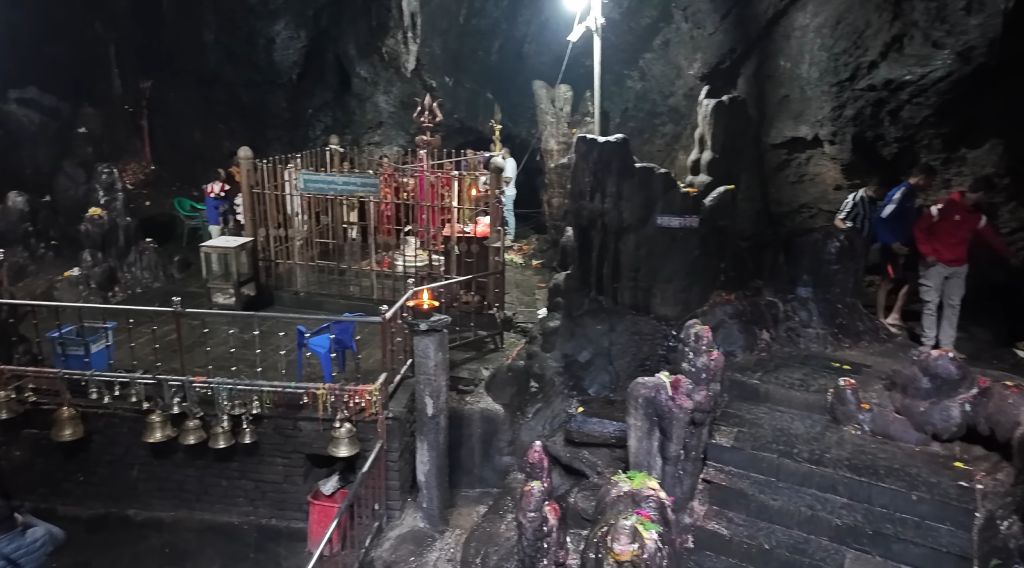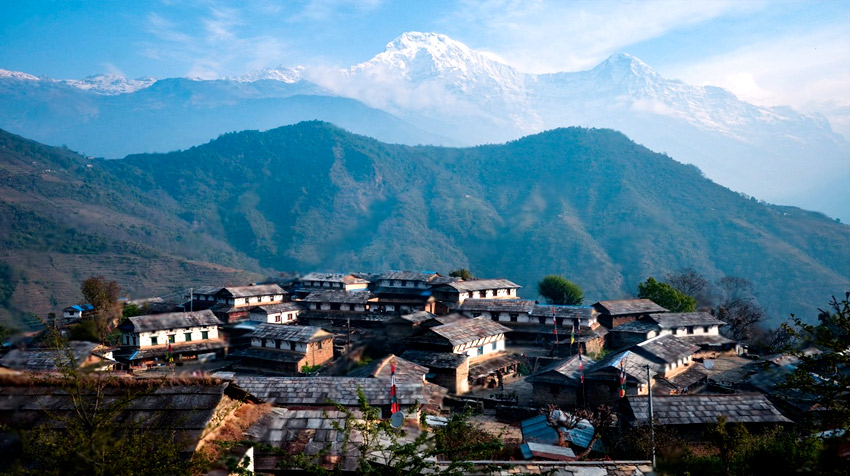Top 10 Must-See Attractions in Lumbini
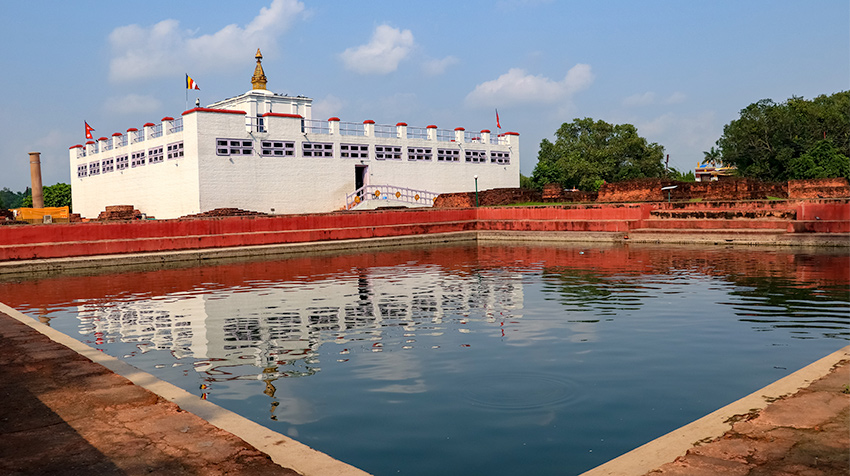
Lumbinī is a Buddhist pilgrimage site in Nepal's Rupandehi District of Lumbini Province. Lumbini is the birthplace of Siddhartha Gautama, who later became known as Buddha. This sacred site is a major pilgrimage destination and a hub of historical, cultural, and archaeological significance. Visiting Lumbini is akin to a journey through time, spirituality, and diverse cultures. This comprehensive guide will delve into the top 10 must-see attractions in Lumbini, ensuring that your visit is both profound and enlightening.
1. Maya Devi Temple
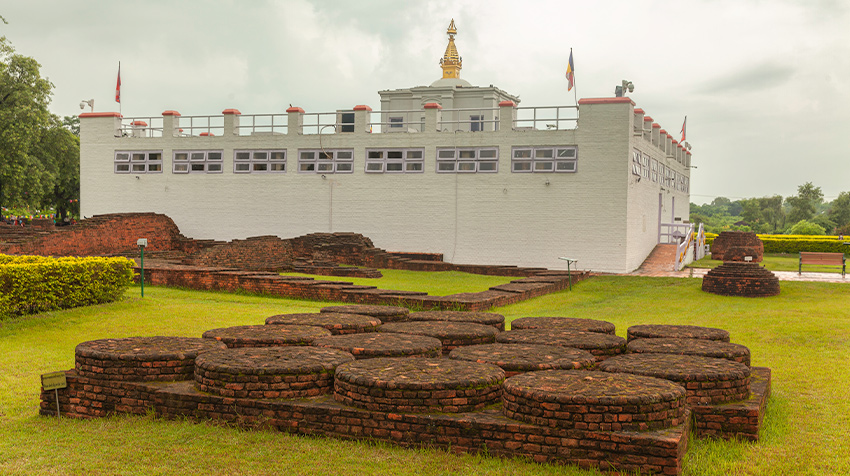
Historical Significance
The Maya Devi Temple, the most revered site in Lumbini, is where Queen Maya Devi gave birth to Siddhartha Gautama in 563 BC. This event, a cornerstone of Buddhist tradition, makes the temple a focal point for pilgrims and historians. The temple's unique architectural features, including its archaeological gems and the Marker Stone that pinpoints the birthplace of Buddha, draw thousands of visitors who wish to connect with this sacred spot.
Architectural Features
The temple is an archaeological gem, with layers of History embedded in its structure. Excavations have revealed remnants of ancient stupas and monasteries dating back to the 3rd century BC. The modern protective structure preserves these relics while providing a space for worship and reflection.
Key Highlights
Sacred Garden: The temple is enveloped by the Sacred Garden, a serene area adorned with ancient trees, lush greenery, and ponds that create a tranquil atmosphere for meditation and reflection.
Marker Stone: Inside the temple lies the Marker Stone, which pinpoints the birthplace of Buddha. This stone is a pivotal artifact, drawing thousands of visitors who wish to connect with this sacred spot.
Ashoka Pillar: This pillar stands near the temple. It is a monument of History erected by Emperor Ashoka during his pilgrimage to Lumbini in 249 BC. The inscriptions on the pillar authenticate Lumbini as the birthplace of Buddha and highlight Ashoka's efforts to spread Buddhism, evoking a sense of awe and reverence.
2. Ashoka Pillar
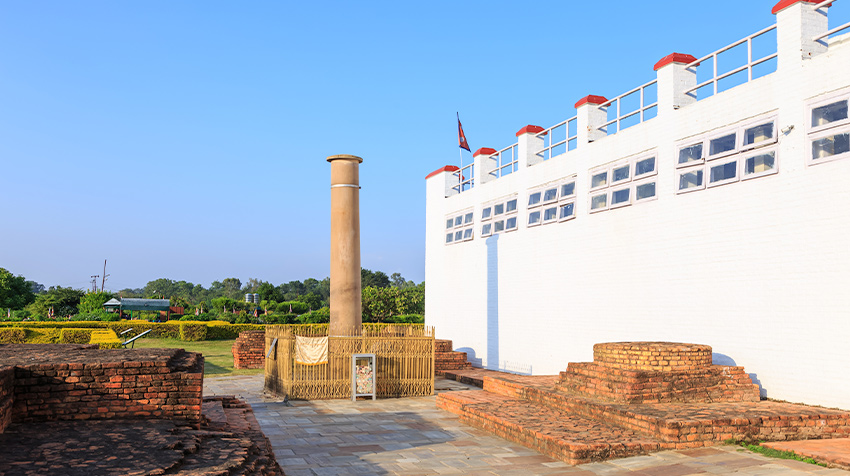
Historical Background and Significance
After embracing Buddhism, Emperor Ashoka, one of India's greatest rulers, visited Lumbini in the 3rd century BC. To commemorate his visit and to mark the significance of the site, he erected the Ashoka Pillar.
Description of the Pillar
This sandstone pillar, about 6 meters tall, is inscribed with Brahmi script. The inscription declares that Ashoka made Lumbini tax-free and reduced its land revenue, emphasizing its sacred status.
Importance in Buddhist History
The Ashoka Pillar is a vital archaeological and historical artifact. It signifies the early spread of Buddhism and Ashoka's pivotal role in promoting the religion. For Buddhists, it symbolizes their heritage and the enduring legacy of Buddha's teachings.
3. Lumbini Museum
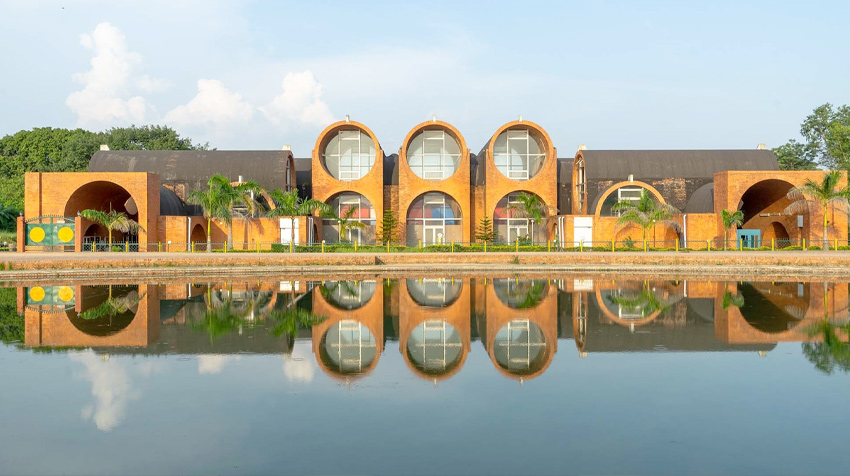
Overview of the Museum
The Lumbini Museum is a treasure trove of artifacts and exhibits that chronicle the rich History and culture of Lumbini and Buddhism. It is an educational resource for visitors, providing deeper insights into the region's past.
Key Exhibits and Artifacts
The museum's collection of over 12,000 artifacts, including ancient terra-cotta pottery, coins, religious manuscripts, and photos of archaeological findings, provides a comprehensive overview of the region's past. Notably, the museum displays relics from the Maurya and Kushan periods, offering a glimpse into the ancient civilizations that once thrived in the area.
Importance of Understanding the History of Lumbini
The Lumbini Museum is crucial for anyone looking to understand the city's historical and cultural context. It provides a detailed narrative of the site's evolution over millennia, enriching visitors' appreciation of its significance.
4. World Peace Pagoda
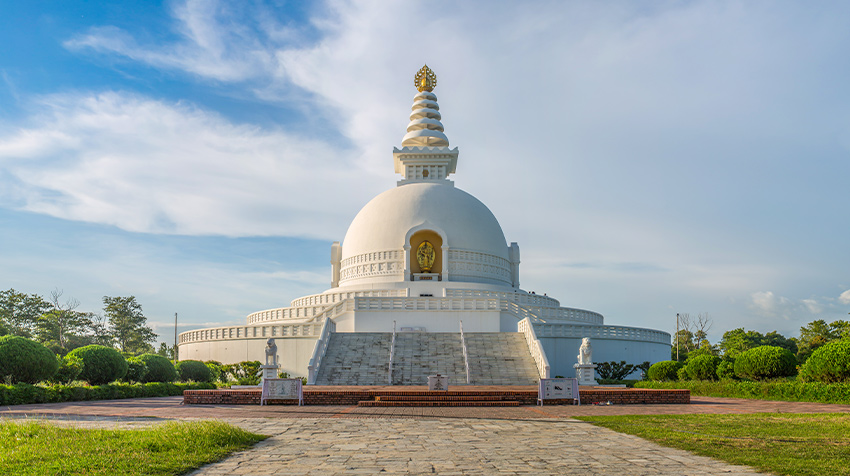
Description and Significance
The World Peace Pagoda, also known as Shanti Stupa, is a striking white structure built by Japanese Buddhists. It promotes peace and unity and embodies Buddha's teachings on nonviolence and harmony.
Scenic Views from the Pagoda
Perched on an elevated platform, the pagoda offers panoramic views of the lush landscape and the Sacred Garden. The serene surroundings make it an ideal spot for meditation and reflection.
Symbolism of the Structure
The World Peace Pagoda symbolizes the universal desire for peace. Its construction involved international collaboration, reflecting the global impact of Buddha's teachings. The pagoda serves as a reminder of the importance of peace and the common bonds that unite humanity.
5. Sacred Garden
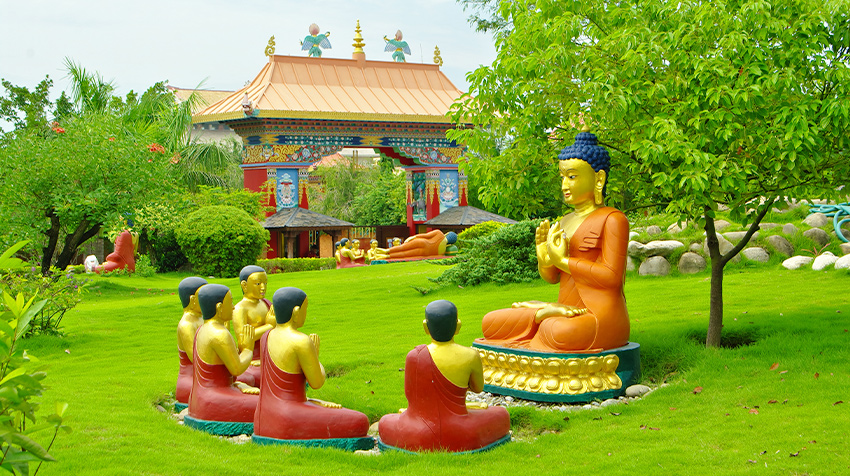
Description and Layout
The Sacred Garden encompasses the Maya Devi Temple and several other significant landmarks. It is meticulously landscaped to create a peaceful and contemplative environment.
Important Landmarks within the Garden
Ancient Stupas: Scattered throughout the garden are ancient stupas, some dating back to the 3rd century BC. These stupas are remnants of early Buddhist structures.
Bodhi Tree: A descendant of the original Bodhi tree under which Buddha attained enlightenment, this tree is a focal point for meditation and worship.
Ponds: Several ponds within the garden add to its tranquility, offering places for reflection and peace.
Spiritual Significance
The Sacred Garden is a sanctuary for spiritual seekers. It provides a space where visitors can engage in meditation, prayer, and contemplation, deepening their connection to Buddha's teachings.
6. Eternal Peace Flame
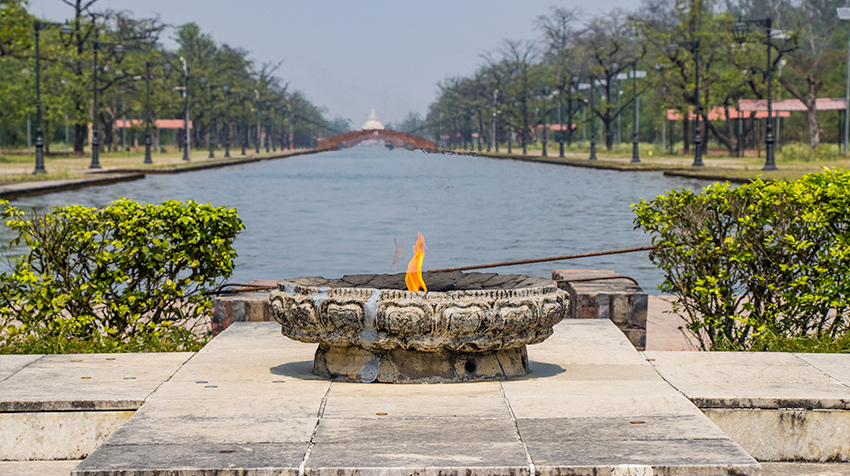
History and Significance
The Eternal Peace Flame was lit in 1986 to commemorate the International Year of Peace. It symbolizes the continuous and shared quest for global harmony and peace.
Location and Surroundings
Situated within the Sacred Garden, the Eternal Peace Flame is surrounded by lush greenery and tranquil pathways, enhancing its serene ambiance.
Symbolism of the Flame
The flame's perpetual burn represents the enduring hope for peace among all nations and peoples. It serves as a poignant reminder of the collective responsibility to foster harmony and understanding in the world.
7. Lumbini Monastic Zone
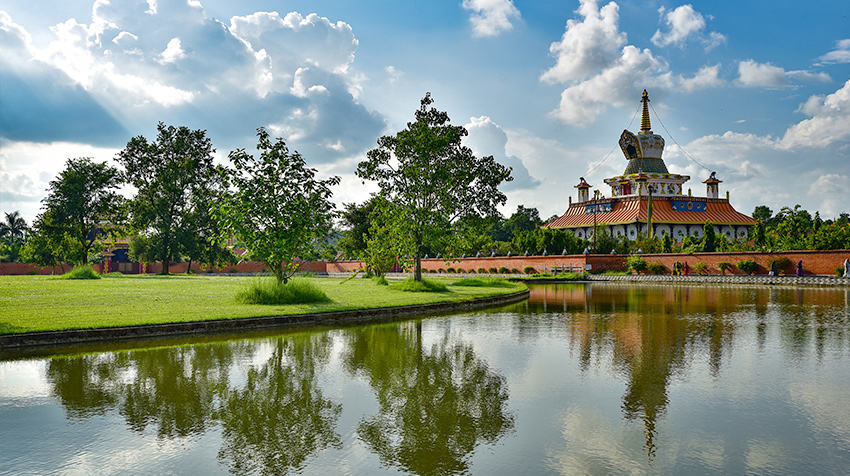
Overview of the Monastic Zone
The Lumbini Monastic Zone is a dedicated area where monasteries from various countries have been built, each reflecting its unique architectural styles and cultural heritage. This zone is a testament to Buddhism's global reach and diversity.
Description of Key Monasteries
Chinese Monastery: Featuring traditional Chinese architectural elements, this Monastery includes serene meditation spaces and beautifully landscaped gardens.
Korean Monastery: Known for its intricate Korean designs, this Monastery offers meditation programs and cultural activities.
Japanese Monastery: Reflecting Zen architectural principles, the Japanese Monastery provides a tranquil environment for visitors.
Architectural Diversity and Cultural Significance
The monastic zone showcases Buddhism's rich architectural diversity and cultural significance. Each Monastery offers a unique glimpse into the traditions and practices of different Buddhist cultures, creating a rich tapestry of spiritual experiences.
8. Royal Thai Monastery
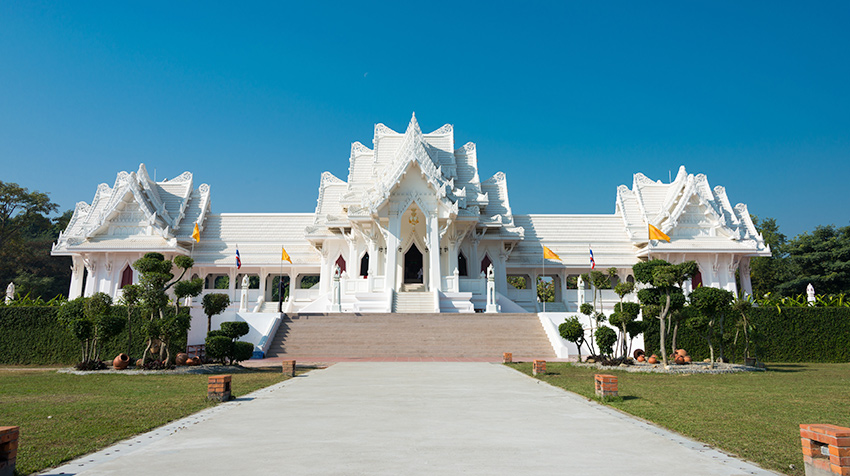
Architectural Features
The Royal Thai Monastery is an elegant structure that exemplifies traditional Thai architecture. Its intricate designs and serene ambiance make it a standout attraction in Lumbini.
Cultural and Religious Significance
The Monastery serves as a center for Thai Buddhist practices and cultural activities. It promotes the teachings of Buddha and fosters cultural exchange between Thailand and Nepal.
Key Highlights and Activities
Visitors can participate in meditation sessions, explore the beautifully decorated prayer halls, and enjoy the serene temple grounds. The Monastery also hosts various cultural events and religious ceremonies.
9. German Monastery
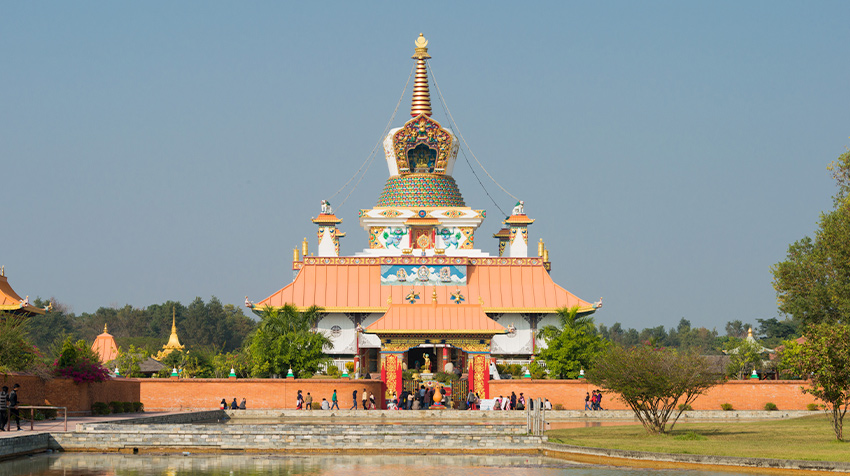
Architectural Style and Significance
The German Monastery, or Deutscher Tempel, blends traditional Buddhist architecture with modern elements. This unique fusion creates a spiritual space that is both contemporary and deeply rooted in Buddhist traditions.
Key Features and Attractions
The Monastery features a large meditation hall, beautifully landscaped gardens, and artistic murals depicting scenes from Buddha's life. It provides a peaceful environment for meditation and contemplation.
Importance to the Lumbini Landscape
The German Monastery adds to Lumbini's cultural diversity and enhances the region's spiritual ambiance. It serves as a hub for German-speaking pilgrims and visitors.
10. Myanmar Golden Temple
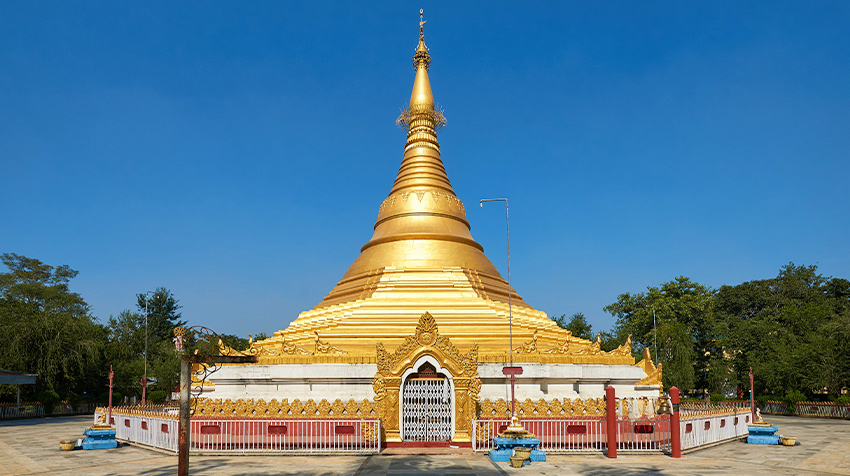
Description and Historical Background
The Myanmar Golden Temple is a magnificent structure that showcases Burmese architecture. It reflects the deep cultural and religious ties between Myanmar and Lumbini.
Architectural and Cultural Significance
The temple features three prayer halls and a central golden stupa with intricate carvings and decorations. It symbolizes Myanmar's rich Buddhist heritage.
Key Highlights and Activities
Visitors can explore the elaborately decorated prayer halls, participate in meditation sessions, and engage in cultural activities. The temple also hosts various religious ceremonies and festivals.
Conclusion
Exploring the top 10 attractions in Lumbini offers a profound spiritual and cultural journey. From the sacred Maya Devi Temple to the serene World Peace Pagoda, each site provides a unique glimpse into the rich heritage of Buddhism. We encourage you to visit and experience Lumbini's tranquility and enlightenment. This journey through Lumbini is about witnessing historical sites and connecting with the essence of peace and spirituality that Buddha's teachings impart.
Additional Tips
Best Time to Visit: The ideal time to visit Lumbini is from October to March when the weather is pleasant. During these months, the temperatures are moderate, and the skies are clear, making it perfect for exploring outdoor attractions.
Travel Tips: Lumbini is accessible by air, road, and rail. The nearest airport is Gautam Buddha Airport in Bhairahawa, about 22 kilometers from Lumbini. Regular buses and taxis are available from the airport to Lumbini. If you are traveling by road, Lumbini is well-connected by highways. For those coming by train, the closest railway station is Gorakhpur in India, from where you can take a bus or taxi to Lumbini.
Accommodation: Various accommodation options range from budget hotels to luxury resorts. Many monasteries also offer lodging facilities for pilgrims and tourists. Booking in advance, especially during peak seasons, is recommended.
Guided Tours: Hiring a local guide can enhance your visit by providing in-depth knowledge of the sites. Guided tours are available and often include transportation, making it easier to explore multiple attractions in a day.
Enjoy your Lumbini spiritual tour through the sacred land of Lumbini! May your visit be filled with peace, enlightenment, and a deeper understanding of Buddha's timeless teachings.









